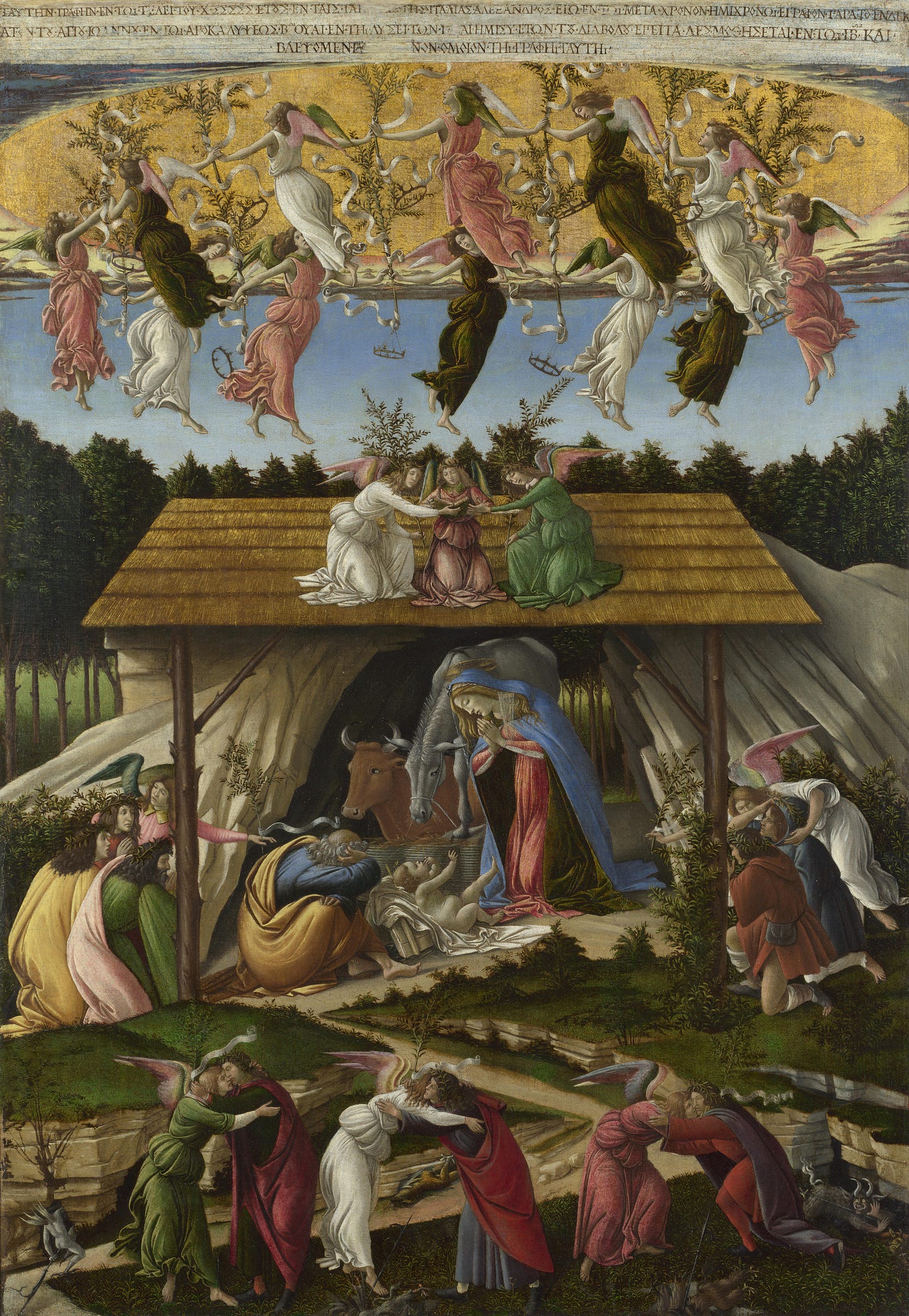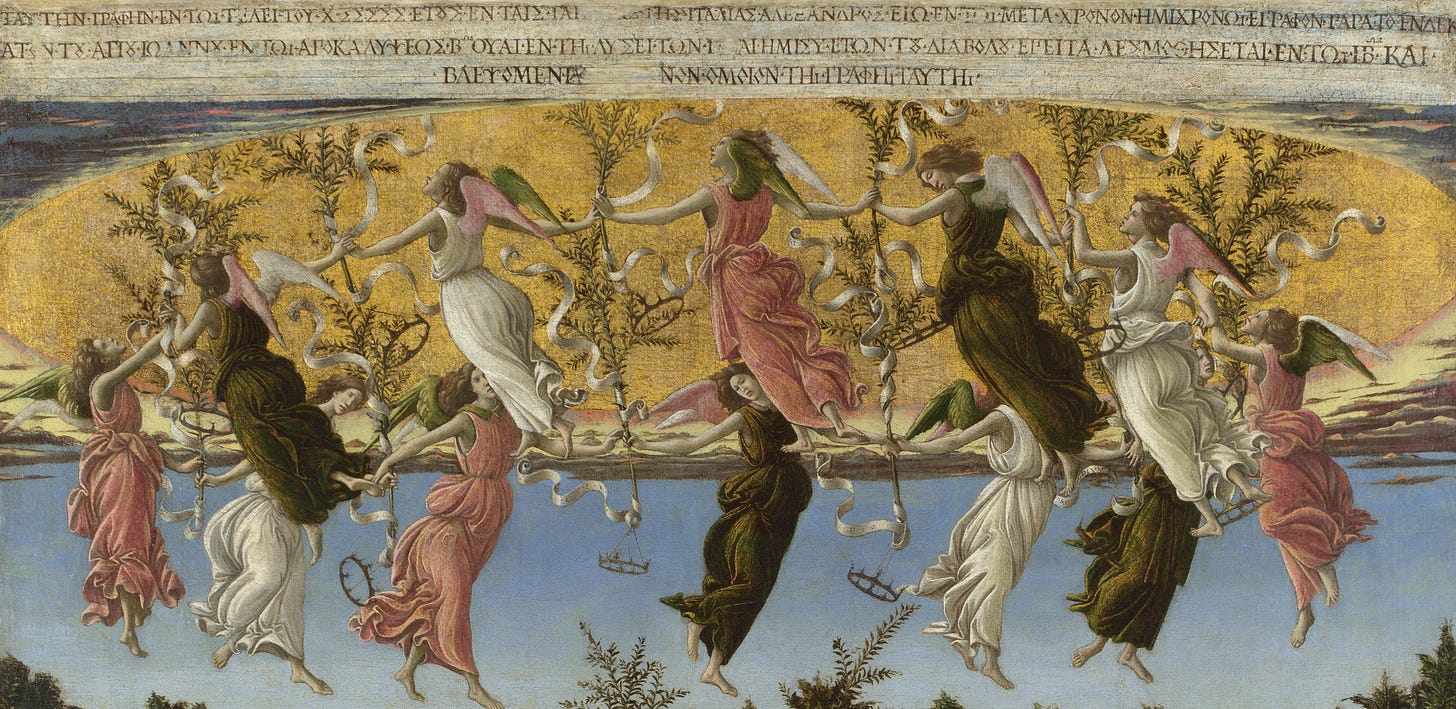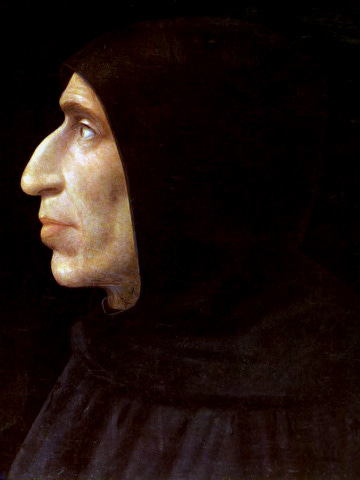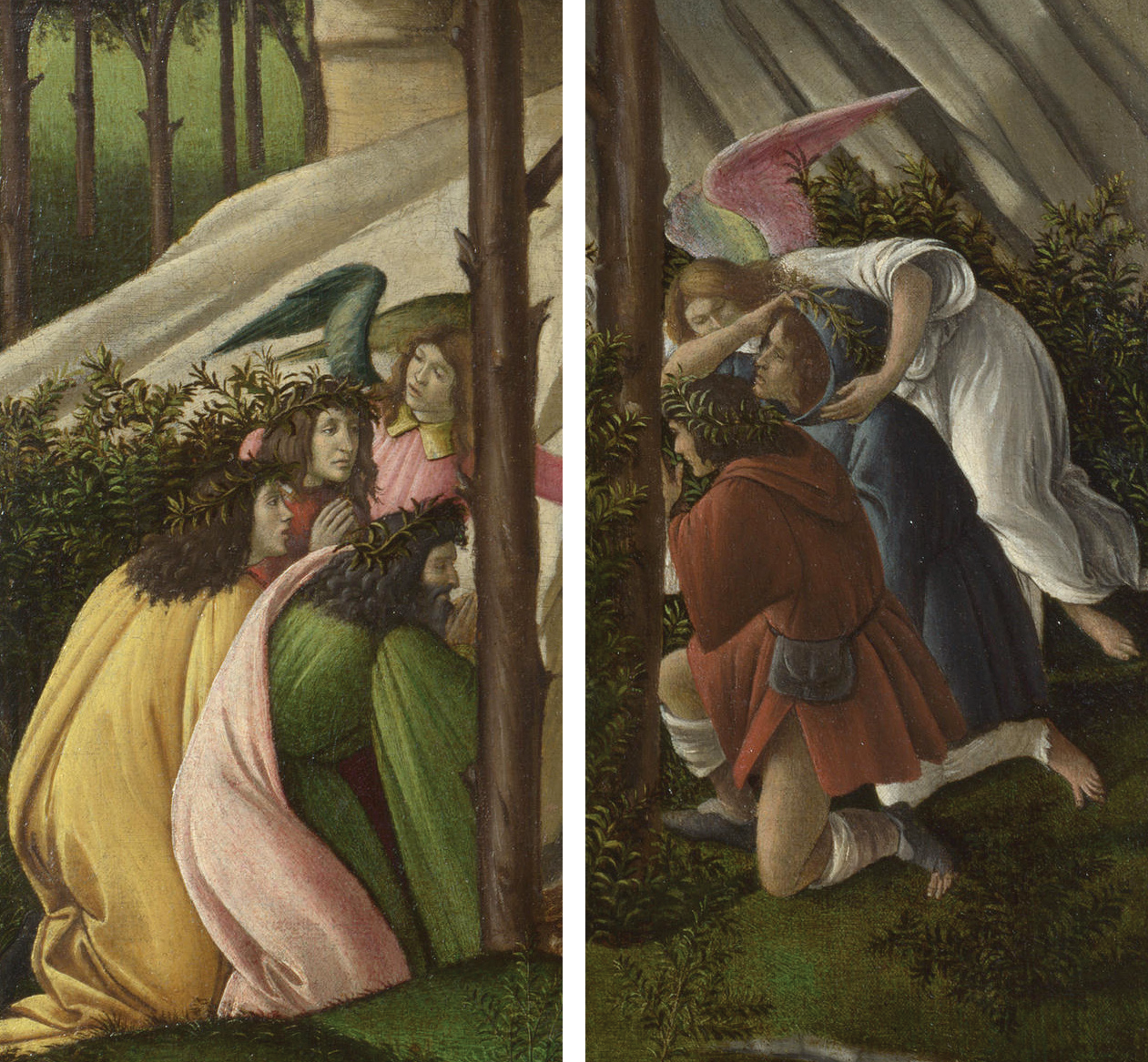On first glance, Sandro Botticelli’s Mystical nativity seems more like a beautiful dance than just a painting.
We have a choir of angels circling over head . . . men being embraced by their saving graces in the foreground below . . . and, of course, our central “nativity” scene, where we find Mary and Joseph in a make shift manger, with their new-born son, Jesus.
But look a little closer, and there are a number of little details here which seem to suggest something much darker - or, at the very least, make this one of the renaissance era’s strangest Nativity paintings.
Firstly, we have the hand painted inscription at the very top (which includes the only known time that Botticelli actually signed one of his works).
The words are in Greek. But, roughly translated, they read:
I, Sandro, made this picture at the conclusion of the year 1500; in the troubles of Italy; in the half time, after the time according to the 11th chapter of Saint John where we find ourselves in the second woe of the Apocalypse
The inscription then goes on to mention something about “the release of the devil for three and a half years . . . who shall be bound and buried, as in this picture”
But clearly, these are not the words we might expect in a work where we are supposed to be celebrating the birth of the messiah.
And in fact, we find a similar oddity at the bottom of the painting too - with those strange little devil figures which have been slain, or go scuttling away in fear.
Again, when we consider all of this in context of a normal Nativity painting which usually centres on the idea of joy or hope for mankind, it becomes hard to know what Botticelli is really intending for us here.
Is he trying to contrast the “troubles” of his own time, with the “hope” of the nativity - almost as a way of reminding people that good will eventually conquer evil?
Or, does he really believe he is literally living “in the end times” - hence this further conviction that the world needed a saviour to be born again now more than ever?
Whatever the case may be- it is a strange paradox that a painting so beautiful can also carry such an apocalyptic undertone.
But in many ways, this inner confliction in Botticelli’s work was pretty standard for the final part of his artistic career.
You see, in the late 1490s, he had fallen under the influence of a controversial and dangerously charismatic preacher by the name of Girolamo Savonarola; a man who was every part a throwback to all those eschatological prophets of Biblical times!
The story of Savonarola’s meteoric rise from ascetic friar, to one of the most powerful religious voices in Florence (And, essentially, a kind of cult leader) is one we may have to discuss in detail another time.
But for now, it’s worth mentioning that this preacher aspired to nothing less than transforming Florence into “a new Jerusalem”. And a key part of his strategy for achieving this, was also to rid the city of all foolish “art and idolatry”.
Hence, a few years before Botticelli painted his Nativity, Savonarola was actually responsible for one of the great tragedies of the renaissance art world - known as “The bonfire of Vanities”.
_
Again, we sadly won’t have time to cover this fully. But, in short, this was a series of evenings when Savonarola tasked his diehard supports to round up as many non biblical manuscripts, sculptures, paintings, tapestries, and musical instruments as they could . . . and throw them on to a great bonfire in the heart of Florence, as a way of purifying the city of its sin.
After all, the Bible itself was very clear authority for Savonarola:
“ Thou shalt not make unto thee any graven image, or any likeness of any thing that is in heaven above, or that is in the earth beneath, or that is in the water under earth: Thou shalt not bow down thyself to them, nor serve them: for I the LORD thy God am a jealous God”
Now, fortunately, Savonarola’s followers were mostly encouraged not to take any works by unnecessary force - otherwise, perhaps the whole city would have been set alight.
And in the end, the Bonfire of Vanities did not quite lead to as much “purification" as the preacher had hoped. But still, it certainly consumed its fair share of masterpieces - and one of the most famous names in Florence who willingly submitted their own work to the fire, was none other than Botticelli himself, who is believed to have burnt more than a dozen of his own paintings.
_
What these works looked like, we will never know. So, of course, we can only hope that Botticelli’s submission to the fire was more of a ceremonial act . . . i.e perhaps he chose a few failed experiments or rough sketches, as a way of appeasing Savonarola without actually sacrificing anything too spectacular.
But in truth, it seems Botticelli really was caught under the preacher’s spell for these years - which means that there is sadly quite a good chance that he really did start to believe some of his works were “sinful” (especially those that depicted Roman gods)
Hence, there may well have been some real masterpieces numbered amongst the works he destroyed - and, for that reason, we can count ourselves lucky that Botticelli did not also end up destroying two of his most iconic works like “The Birth of Venus” or “Primavera”. Because, of course, paintings like this would have been absolute heresy and degeneracy in Savonarola’s eyes.
So, with all this chaos taking place in the years before Botticelli painted his “Mystical Nativity” - perhaps it is no wonder why this work carries such a sense of confliction.
In essence, Botticelli was trying to paint a joyful work, while still struggling with a very personal battle over whether he should even be a painter anymore, or if his life’s vocation really had all been a great sin.
And in that mind, perhaps the “Troubles of Italy” may also be a metaphor for “The Troubles of the artist” too. Although, if that is the case, then it becomes even more telling that he chooses to sign this work - declaring “I, Sandro, made this . . .”
Had he truly been convinced that art was a sin - we would expect him to deny responsibility, or to hide his own identity so that none of the other followers of Savonarola would know he still worked as a painter. (Even though, admittedly, the preacher himself was dead by the time this work was created).
Yet when it came to putting the last touched on this work, Botticelli chose to do the exact opposite instead.
He took full responsibility - more so than at any other point in his career since he had placed his own self portrait in one of his past Nativity works.
And, in doing so, maybe we can read this as his way of declaring “Yes. Italy is in trouble . . . and the world is falling apart . . . and we really are deeply in need of a saviour . . . but, nonetheless, I, Sandro, will continue to bring beauty into life”.
_
Truly, an artist’s soul is hard to extinguish!












I love that you choose this painting to talk about today. We are in 'the troubles' as well. This is a work I had not seen before and because it's quite busy, I would never have taken the time to really look at it or try to see the larger picture of the time it was painted in or the bravery of the artist.
I so appreciate your work. Thanks
Also George, another political point for Botticelli was the turmoil in Florence which resulted in the family he was informally adopted by and who solely supported his career being persecuted. At the time, Florence was in political chaos after the expulsion of the Medici family in 1494. The city was seen as sinful and in need of redemption. The painting’s theme of divine intervention may reflect Botticelli’s hope for Florence’s spiritual rebirth.